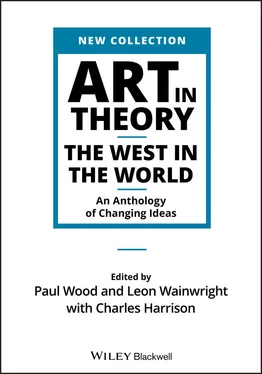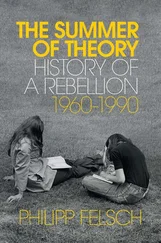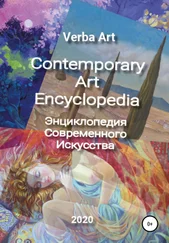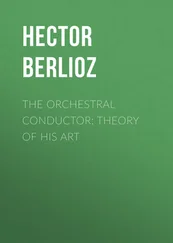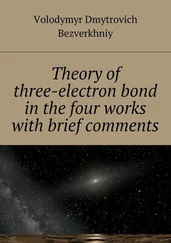No specimens of genuine Oratory can be expected from nations among whom the form of government precludes even the idea of popular eloquence; but the art of writing, in elegant and modulated periods, has been cultivated in Asia from the earliest ages the Vèda’s as well as the Alcoran, are written in measured prose; and the compositions of ISOCRATES are not more highly polished than those of the best Arabian and Persian authors.
Of the Hindu and Muselman architecture there are yet many noble remains in Bahar, and some in the vicinity of Malda; nor am I unwilling to believe, that even those ruins, of which you will, I trust, be presented with correct delineations, may furnish our own architects with new ideas of beauty and sublimity.
IIA10 William Beckford of Fonthill (1760–1844) from Vathek
Vathek is the principal literary claim to fame of the wealthy libertine William Beckford (usually referred to as Beckford of Fonthill to differentiate him from his cousin William Beckford of Somerley cf. IIB11). The text is a classic of eighteenth‐century Orientalism, with an added colouring of Gothic. Based in part upon Galland’s French version of The Arabian Nights , as well as other French sources including Voltaire and the ‘Persian letters’ genre (cf. IIA2 and 4), Vathek also draws on a range of more scholarly Orientalist literature. This is frequently referenced in the extensive footnotes to the story to underpin the (fictive) claim that it was translated from an authentic Arabic manuscript. This blurring of fact and fancy was prevalent in eighteenth‐century Orientalism, and to convey a sense of how it worked, a small number of the original footnotes have been retained; these include references to the work of Lady Mary Wortley Montagu and Sir William Jones (cf. IIA3 and 9). Frequent reference is also made to the Bibliothèque Orientale of d’Herbelot (cf. IIA1). The history of the book’s composition and publication is complex. It was originally written, in French, in the early 1780s. Beckford credited the germ of the idea for the story to his collaborator, Samuel Henley, who not only provided the extensive quasi‐academic footnotes but also rushed out an English translation in 1786, purportedly from an unpublished Arabic manuscript. Two French versions were quickly put out by Beckford − without access to his original manuscript – in an attempt to re‐take ownership of his work. But it was Henley’s English version which had the impact, not least on Byron, who responded with his poem The Giaour in 1813 (cf. IIIB3). Eventually, in 1816, Beckford put out a definitive edition, with less pedantic footnotes, and it is this which has remained in print ever since. Nonetheless, we have situated our extracts in Part II of the present anthology because of its original date of composition and the early influence it exerted. The extracts are taken from William Beckford, Vathek , edited with an introduction and notes by Thomas Keymer, Oxford University Press (World’s Classics) 2013, pp. 35–6 and 44, footnotes from pp.109–10 and 117–18. (Vathek is Caliph; Carathis is his mother; Bababalouk, his eunuch. The extracts describe a journey through present‐day Iraq and evince the characteristic Orientalist concerns with opulence and sexuality that were later to attract the criticism of Edward Said and others, cf. VIIB8. It is perhaps worth noting that the cover of the World’s Classic edition is illustrated by a detail of The Continent of Asia by Tiepolo from the Four Continents , Episcopal Palace, Würzburg, 1752–3.)
Scarcely had Carathis ended this edifying discourse, when the sun, setting behind the mountain of the four fountains, gave place to the rising moon. This planet, being that evening at full, appeared of unusual beauty and magnitude, in the eyes of the women, the eunuchs and the pages who were all impatient to set forward. The city re‐echoed with shouts of joy, and flourishing of trumpets. Nothing was visible, but plumes, nodding on pavilions, and aigrets shining in the mild lustre of the moon. The spacious square resembled an immense parterre variegated with the most stately tulips of the east. 1
Arrayed in the robes which were only worn at the most distinguished ceremonials, and supported by his vizir and Bababalouk, the Caliph descended the great staircase of the tower in the sight of all his people. He could not forbear pausing, at intervals, to admire the superb appearance which every where courted his view: whilst the whole multitude, even to the camels with their sumptuous burthens, knelt down before him. For some time a general stillness prevailed, which nothing happened to disturb, but the shrill screams of some eunuchs in the rear. These vigilant guards, having remarked certain cages of the ladies 2swagging somewhat awry, and discovered that a few adventurous gallants had contrived to get in, soon dislodged the enraptured culprits and consigned them, with good commendations, to the surgeons of the serail. The majesty of so magnificent a spectacle, was not, however, violated by incidents like these. […]
On a given signal, the great standard of the Califat was displayed; twenty thousand lances shone around it; and the Caliph, treading royally on the cloth of gold, which had been spread for his feet, ascended his litter, amidst the general acclamations of his subjects.
The expedition commenced with the utmost order and so entire a silence, that, even the locusts were heard from the thickets on the plain of Catoul. Gaiety and good humour prevailing, they made full six leagues before the dawn; and the morning star was still glittering in the firmament, when the whole of this numerous train had halted on the banks of the Tigris, where they encamped to repose for the rest of the day.
* * *
The cavalcade soon entered a path, which was skirted by flowering shrubs, and extended to a vast wood of palm trees, whose branches overspread a vast building of free stone. This edifice was crowned with nine domes, and adorned with as many portals of bronze, on which was engraven the following inscription: ‘This is the asylum of pilgrims, the refuge of travellers, and the depositary of secrets from all parts of the world.’
Nine pages, beautiful as the day, and decently clothed in robes of Egyptian linen, were standing at each door. They received the whole retinue with an easy and inviting air. Four of the most amiable placed the Caliph on a magnificent tecthtrevan: 3…
Every man being gone out of sight, the gate of a large inclosure, on the right, turned on its harmonious hinges; and a young female, of a slender form, came forth. Her light brown hair floated in the hazy breeze of the twilight. A troop of young maidens, like the Pleiades, attended her on tip‐toe. They hastened to the pavilions that contained the sultanas: and the young lady, gracefully bending, said to them: ‘Charming princesses, every thing is ready: we have prepared beds for your repose, and strewed your apartments with jasmine: no insects will keep off slumber from visiting your eye–lids; we will dispel them with a thousand plumes. Come then, amiable ladies, refresh your delicate feet, and your ivory limbs, in baths of rose water; 4and, by the light of perfumed lamps, your servants will amuse you with tales.’ The sultanas accepted, with pleasure, these obliging offers; and followed the young lady to the emir’s harem.
IIA11 Sir George Staunton (1737–1801) from his account of the Macartney embassy to China
The embassy to China, headed by Earl Macartney in 1793, was the first full‐scale attempt by the British government to establish a modern trading relationship with China. Falling somewhere between the earlier Cook voyages and the later French expedition to Egypt (cf. IIB4 and IIIA4), the embassy combined proto‐imperialist military and trading aspects with Enlightenment knowledge‐gathering projects. Although the embassy failed in its main aim of initiating a new trading and diplomatic relationship, it nonetheless did result in considerable new knowledge of both the nature and culture of China. The published account of the embassy was written by Macartney’s deputy, George Staunton. From the point of view of the present anthology, its interest is twofold. On the one hand there are descriptions of Chinese gardens. These confirm the status of gardening in China as a significant art form and Chinese gardening’s distinctive preoccupations, while tempering some of the more fanciful accounts by previous European enthusiasts (cf. IC15, IIA8). On the other hand, there is a much more critical account of Chinese painting. Going on from the stance formulated in the previous century (cf. IC14), the Chinese are taken to task for their lack of knowledge of the human figure, and of perspective. Yet the account of Chinese art, jointly composed by Staunton and the embassy’s comptroller, John Barrow, does embrace two points which elevate it above the norm. Firstly, it gives a rudimentary account (seemingly without understanding it) of the fact that Chinese art was operating with a conceptually based, object‐oriented representational system, rather than a European perception‐based, spectator‐oriented system. Secondly, it offers a unique contemporary discussion of the conflicting currents informing the art of the Jesuit missionary Giuseppe Castiglione (1688–1766), whose work represents the high point of attempts to reconcile the divergent European and Chinese approaches before the transformation wrought by the modern movement. Our extracts are taken from An Authentic Account of an Embassy from the King of Great Britain to the Emperor of China , printed by W. Bulmer & Co. for G. Nicoll, Bookseller to His Majesty, London 1797, vol. 2, Chapter 3, pp. 224–6, 229–31, 240–5 and 306–10.
Читать дальше
